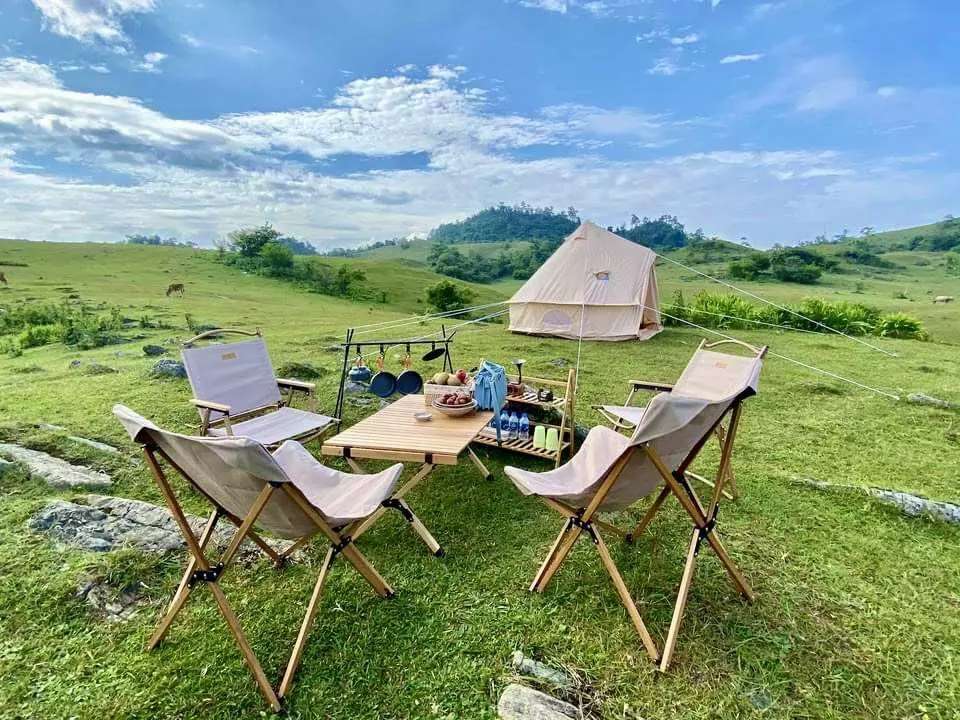It might seem silly to think about ways to make your camping trip eco-friendly. After all, what could be more green than a hike through the mountain or a night in the woods? But with so many people taking advantage of the great outdoors, we all need to be careful about the impact camping can have. The Travel Industry Association of American estimates that 1 in 5 Americans goes camping every year: can you imagine the damage all that hiking, driving, and littering could do to fragile ecosystems? So next time you go camping, be mindful of the ways your trip is effecting the plants and animals you’re visiting – after all, being out in nature can be the perfect time to focus on making good decisions for the earth. To help you, here’s our list of guidelines for minimizing your impact on the environment while still having a safe and fun camping trip.
1. Stay close to home
Part of the fun of camping is exploring new environments, but instead of packing up your gas-guzzling car for a long road trip, why not try looking for places to camp that are closer to home? You’ll be reducing your carbon footprint and getting to know your local habitats, plants, and animals better.
2. Wash with eco-friendly soaps
The chemicals in most soaps can have all kinds of negative effects on natural systems. For example, phosphates, a common ingredient in detergents, upset the nutrient balance in waterways and can lead to rampant, dangerous growth of algae. So if you are going to be using any kind of soap, including shampoo, body wash, or dish detergents, be sure to find a biodegradable option that won’t damage the environment. Look for citrus-based all-purpose cleansers and dish detergents.
3. Keep waste out of the water
Even if the soap you’re using is biodegradable and eco-friendly, you should never dump soap or any other waste directly into any body of water. Instead, collect rain or river water so you can wash yourself and your dishes at least 30 feet away from any lakes, rivers, or streams.
4. Go the right way
Waste is unsightly, can spread disease and contaminate water quality, so whether you’re on a weeklong trip or just out for a day hike, follow these easy steps when you’ve got to go:
- Locate an area at least 200 feet (about 70 paces) from any open water source (creek, lake, etc.) that is well off the path.
- Dig a “cat hole” 6 to 8 inches deep, and about 6 or so inches wide.
- Leave your deposit.
- Use only a few squares of toilet paper.
- Add some soil, and mix it with the waste using a small stick.
- Fill the rest of the hole with soil, and include the part of the stick that is contaminated (leave the stick poking out if necessary).
- Wash your hands (at least 200 feet from an open water source). Bring the water to you. Even though some soaps say they are biodegradable, they should still not be used in streams or lakes.
5. Skip the batteries
Instead of relying on toxic disposable batteries, bring along solar or crank flashlights and lanterns. If you do need batteries, make sure they’re rechargeable.
6. Get BPA-free water bottles
Staying hydrated is an important part of any hike, so be sure to bring enough water in a BPA-free water bottle. BPA, an additive in some plastics, mimics human hormones and can leach from plastics into food and water.
7. Shop secondhand
There’s no need to buy a lot of new gear if you’re not a regular camper. Instead, try to borrow from a friend or look around in secondhand stores or online for used tents, sleeping bags, and camp stoves.
8. Bring reusable supplies
While it can be tempting to make clean-up easier by bringing along disposable items, you’ll be helping out the environment by packing reusable dishes, cutlery, and cups.
9. Pack it out
Never leave trash behind at a campsite. Instead, always bring along trash bags to collect your garbage and make sure waste finds its way to the appropriate garbage can or recycling bin.
10. Leave the packaging at home
Cut down on packaging waste by buying food in bulk and packing it in reusable containers. Try stainless steel or a bioplastic like PLA.
11. Buy green
Look for camping supplies like tents, backpacks, and hiking boots made from recycled materials, or buy secondhand.
12. Make your campfire safe
When you can, try to cook meals on small camp stoves to avoid the dangers of a fire. If fires are allowed, always follow posted guidelines for campfires and build them in designated pits away from your tent and any surrounding vegetation. You should also never bring in outside firewood – it can carry insects, seeds, or microorganisms that could harm native species.
13. Protect the land
The most important thing you can do when camping is to protect the land around you. You can prevent erosion and damage to plant life by staying on marked trails and camping in designated spots. Also, never take home rocks, flowers, or other natural souvenirs. Remember, you want to leave the land just like you found it!
May you also like: Best Air Mattress for Camping







Leave a Reply